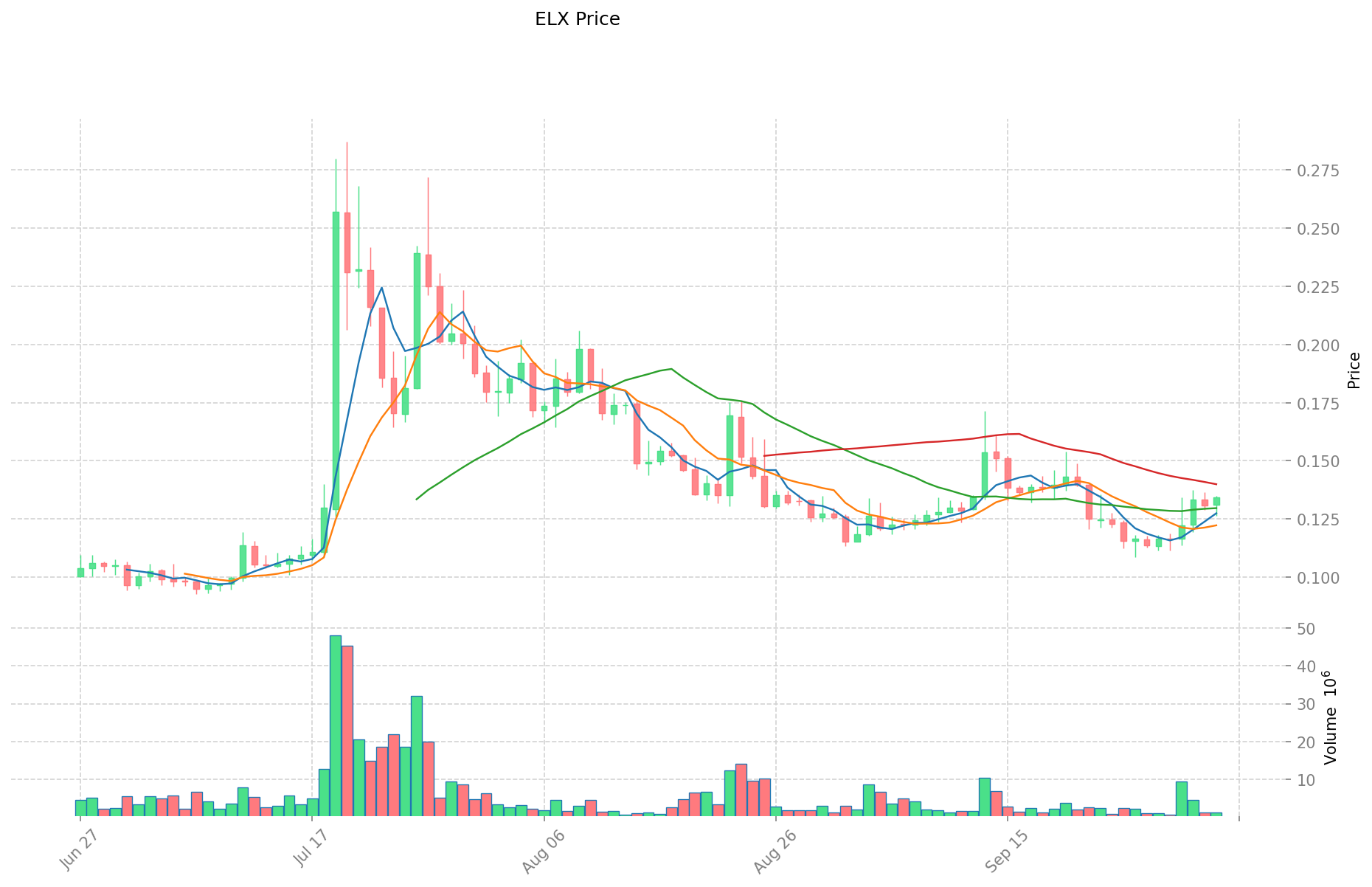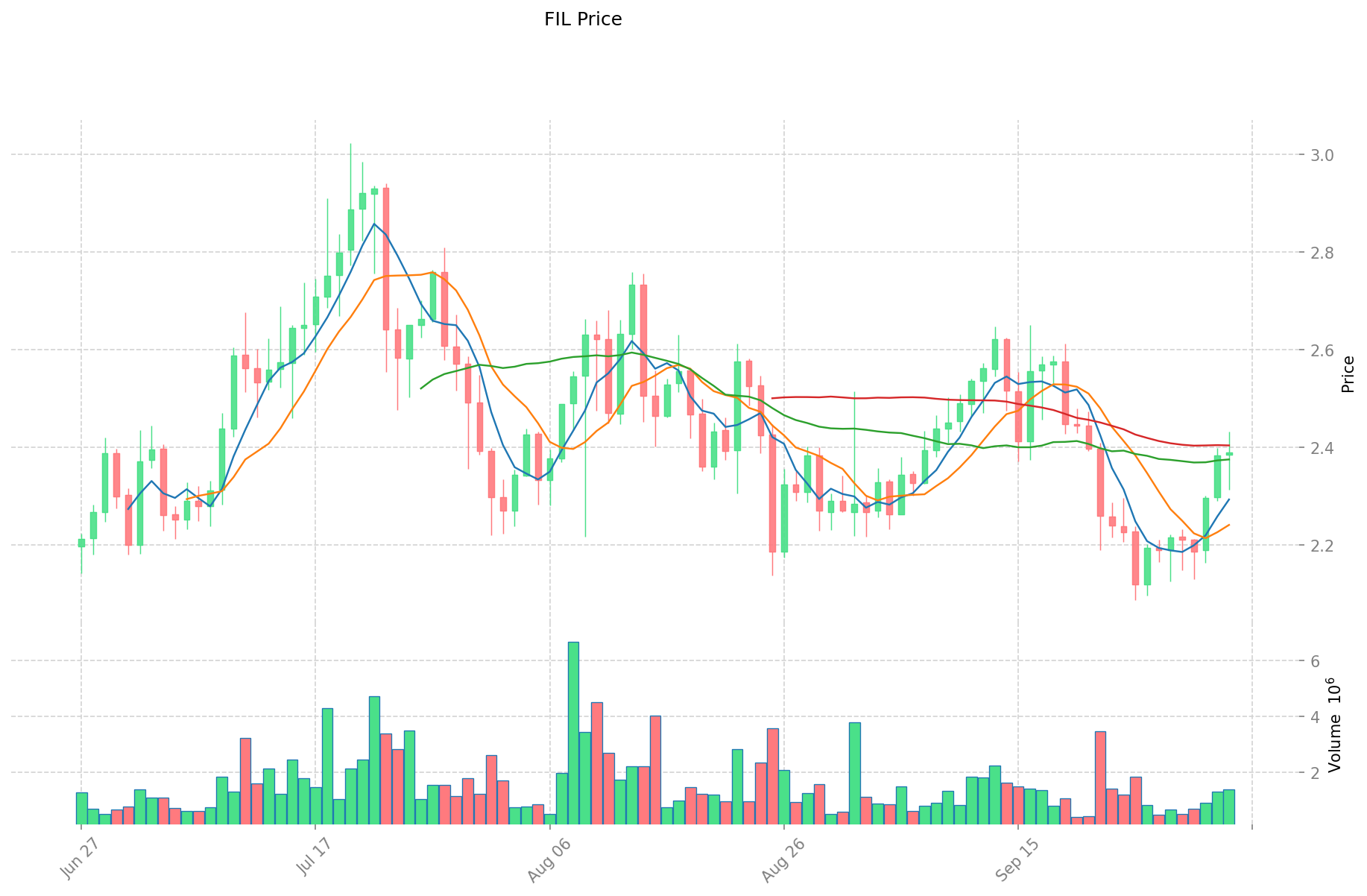ELX vs FIL: Comparing Two Leading Digital Asset Protocols in the Web3 Ecosystem
Introduction: ELX vs FIL Investment Comparison
In the cryptocurrency market, the comparison between Elixir vs Filecoin(IPFS) has always been an unavoidable topic for investors. The two not only show significant differences in market cap ranking, application scenarios, and price performance, but also represent different crypto asset positioning.
Elixir (ELX): Since its launch, it has gained market recognition for its focus on DeFi and liquidity solutions.
Filecoin(IPFS) (FIL): Since its inception in 2020, it has been hailed as a decentralized storage network, and is one of the cryptocurrencies with the highest global trading volume and market capitalization.
This article will comprehensively analyze the investment value comparison between ELX vs FIL, focusing on historical price trends, supply mechanisms, institutional adoption, technological ecosystems, and future predictions, attempting to answer the question that investors are most concerned about:
"Which is the better buy right now?" I. Price History Comparison and Current Market Status
ELX and FIL Historical Price Trends
- 2025: ELX reached its all-time high of $0.7667 on March 7, 2025, due to increased adoption in DeFi.
- 2021: FIL peaked at $236.84 on April 1, 2021, following its mainnet launch and growing interest in decentralized storage.
- Comparative analysis: In the recent market cycle, ELX dropped from $0.7667 to a low of $0.07336, while FIL declined from its all-time high of $236.84 to a current price of $2.388.
Current Market Situation (2025-10-04)
- ELX current price: $0.13438
- FIL current price: $2.388
- 24-hour trading volume: ELX $136,844.42 vs FIL $3,365,884.44
- Market sentiment index (Fear & Greed Index): 71 (Greed)
Click to view real-time prices:
- Check ELX current price Market Price
- Check FIL current price Market Price


II. Core Factors Influencing the Investment Value of ELX vs FIL
Sustainable Development and ESG Factors
- ESG Framework: Environment, Social, and Governance factors are three core metrics used to measure sustainable development and ethical impact of investments
- Climate Risk Considerations: Environmental factors include climate risk assessment and natural resource scarcity
- Portfolio Sustainability: Long-term sustainability evaluation is essential for both ELX and FIL investment decisions
Technical Innovation and Economic Mechanisms
- Asset Production Mechanisms: Core evaluation involves tracking the dynamic production and consumption mechanisms of assets within the ecosystem
- Economic Cycles: Identifying investment opportunities in the initial stages of positive externality economic cycles
- Web3 Value Assessment: The evaluation of Web3 projects (including ELX and FIL) requires analysis of sustainable economic models
Portfolio Diversification Strategy
- Balanced Holdings: Maintaining diversified exposure with individual holdings typically weighted between 1-4% of the portfolio
- Risk Distribution: Ensuring income sources are well-distributed rather than concentrated in few assets
- Stability Enhancement: Diversification across assets contributes to stable returns and reduced volatility
Long-term Investment Perspectives
- Turnover Rate Considerations: High turnover rates may affect investment classification and long-term value
- Core Funding Allocation: Ensuring adequate core and flexible funding to enhance resilience
- Investment Recovery Period: Analysis of factors that may shorten investment recovery periods
III. 2025-2030 Price Prediction: ELX vs FIL
Short-term Prediction (2025)
- ELX: Conservative $0.080694 - $0.13449 | Optimistic $0.13449 - $0.1425594
- FIL: Conservative $1.7925 - $2.39 | Optimistic $2.39 - $3.4177
Mid-term Prediction (2027)
- ELX may enter a growth phase, with prices estimated at $0.10622073996 - $0.17354374416
- FIL may enter a strong growth phase, with prices estimated at $3.253763925 - $5.1698693475
- Key drivers: Institutional capital inflow, ETF, ecosystem development
Long-term Prediction (2030)
- ELX: Base scenario $0.16165632083546 - $0.212705685309816 | Optimistic scenario $0.212705685309816 - $0.229722140134601
- FIL: Base scenario $4.968844039333012 - $5.58297083071125 | Optimistic scenario $5.58297083071125 - $6.085438205475262
Disclaimer: This analysis is based on historical data and projections. Cryptocurrency markets are highly volatile and unpredictable. This information should not be considered as financial advice. Always conduct your own research before making investment decisions.
ELX:
| 年份 | 预测最高价 | 预测平均价格 | 预测最低价 | 涨跌幅 |
|---|---|---|---|---|
| 2025 | 0.1425594 | 0.13449 | 0.080694 | 0 |
| 2026 | 0.160688652 | 0.1385247 | 0.090041055 | 3 |
| 2027 | 0.17354374416 | 0.149606676 | 0.10622073996 | 11 |
| 2028 | 0.2148950294064 | 0.16157521008 | 0.1567279537776 | 20 |
| 2029 | 0.237176250876432 | 0.1882351197432 | 0.171293958966312 | 40 |
| 2030 | 0.229722140134601 | 0.212705685309816 | 0.16165632083546 | 58 |
FIL:
| 年份 | 预测最高价 | 预测平均价格 | 预测最低价 | 涨跌幅 |
|---|---|---|---|---|
| 2025 | 3.4177 | 2.39 | 1.7925 | 0 |
| 2026 | 4.3267365 | 2.90385 | 1.626156 | 21 |
| 2027 | 5.1698693475 | 3.61529325 | 3.253763925 | 51 |
| 2028 | 6.50102032215 | 4.39258129875 | 3.68976829095 | 84 |
| 2029 | 5.7191408509725 | 5.44680081045 | 5.011056745614 | 128 |
| 2030 | 6.085438205475262 | 5.58297083071125 | 4.968844039333012 | 133 |
IV. Investment Strategy Comparison: ELX vs FIL
Long-term vs Short-term Investment Strategy
- ELX: Suitable for investors focused on DeFi and liquidity solutions
- FIL: Suitable for investors interested in decentralized storage and Web3 infrastructure
Risk Management and Asset Allocation
- Conservative investors: ELX 30% vs FIL 70%
- Aggressive investors: ELX 60% vs FIL 40%
- Hedging tools: Stablecoin allocation, options, cross-currency portfolios
V. Potential Risk Comparison
Market Risk
- ELX: Higher volatility due to smaller market cap and lower liquidity
- FIL: Exposure to fluctuations in the broader crypto market and storage industry demands
Technical Risk
- ELX: Scalability, network stability
- FIL: Mining power concentration, security vulnerabilities
Regulatory Risk
- Global regulatory policies may have different impacts on both assets
VI. Conclusion: Which Is the Better Buy?
📌 Investment Value Summary:
- ELX advantages: Focus on DeFi, potential for high growth in a niche market
- FIL advantages: Established decentralized storage network, larger market cap and trading volume
✅ Investment Advice:
- New investors: Consider a balanced approach with a larger allocation to FIL for its established market position
- Experienced investors: Explore a more balanced portfolio between ELX and FIL based on risk tolerance
- Institutional investors: Evaluate both assets for potential inclusion in diversified crypto portfolios
⚠️ Risk Warning: The cryptocurrency market is highly volatile, and this article does not constitute investment advice. None
VII. FAQ
Q1: What are the main differences between ELX and FIL in terms of their focus and use cases? A: ELX focuses on DeFi and liquidity solutions, while FIL is primarily designed as a decentralized storage network.
Q2: How do the current market prices of ELX and FIL compare to their all-time highs? A: As of 2025-10-04, ELX is trading at $0.13438, down from its all-time high of $0.7667. FIL is trading at $2.388, significantly lower than its all-time high of $236.84 reached in April 2021.
Q3: What are the key factors influencing the investment value of ELX and FIL? A: Key factors include sustainable development and ESG considerations, technical innovation, economic mechanisms, portfolio diversification strategies, and long-term investment perspectives.
Q4: How do the price predictions for ELX and FIL differ for 2030? A: For 2030, ELX's base scenario predicts a range of $0.16165632083546 - $0.212705685309816, while FIL's base scenario predicts a range of $4.968844039333012 - $5.58297083071125.
Q5: What are the suggested asset allocations for conservative and aggressive investors? A: Conservative investors may consider allocating 30% to ELX and 70% to FIL, while aggressive investors might opt for 60% ELX and 40% FIL.
Q6: What are the main risks associated with investing in ELX and FIL? A: Both assets face market risks, technical risks, and regulatory risks. ELX may have higher volatility due to its smaller market cap, while FIL is exposed to fluctuations in the broader crypto market and storage industry demands.
Q7: Which asset might be more suitable for new investors? A: New investors might consider a larger allocation to FIL due to its established market position and larger market cap, while maintaining a balanced approach overall.